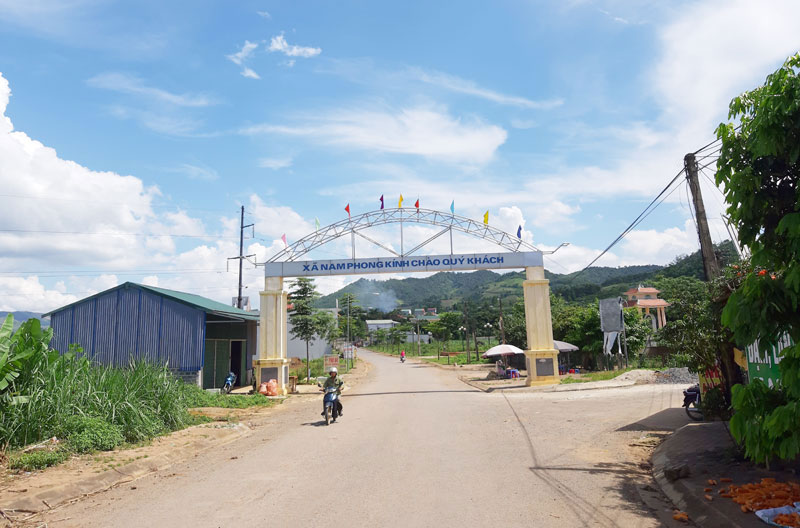
(HBO) – Infrastructure and living conditions in Nam Phong commune, Cao Phong district, have improved very much in the last few years.
Photo: Nam Phong commune’s infrastructure is improved to meet the demand for socio-economic development.
Nam Phong commune’s infrastructure is improved to meet the demand for socio-economic development.
Nam Phong was known as a commune that pioneered crop restructuring with the rice growing area reduced and the sugarcane growing area increased. Planting citrus fruit trees, afforestation, and animal husbandry are new ways for residents to increase their incomes.
Dinh Duc Chinh, chairman of Nam Phong commune People's Committee, said local authorities and people are united and actively building a new life. In 2016, the commune met the criteria to become a new-styled rural area. Since then, the commune has continued to maintain its recognition.
Residents are actively donating land to expand roads. They also keep houses and public work green, clean, and beautiful, creating an increasingly innovative rural look. Locals have donated land to open the road from National Highway 6 to the centre of the commune, and other internal roads. At the beginning of this year, the commune started the construction of a primary school, with an area of 9,400 sq.m in Tram hamlet. As many as 26 households agreed to move to make room for the school. So far, 16 classrooms have been built.
Chinh said that one of the most prominent achievements made in the commune is that it has solved environmental problems well. With support from the State, the commune built a garbage dump and incinerator. The commune established a group of three members who are responsible for collecting garbage twice a week and then carrying the waste to the incinerator for treatment. Along with that, the commune also promoted communication, calling on people to actively participate in environmental protection activities.
By now, the per capita income of the commune has reached 47 million VND/year. The commune’s poor households number has decreased to 13%.
More than just an information technology teacher, Bui Van Nien is an inspiring figure who has nurtured the scientific curiosity and creative spirit of students in Vietnam’s ethnic minority communities.
Da Bac is the most disadvantaged mountainous district in Hoa Binh province, with ethnic minorities accounting for about 90% of its population. Over the past years, the district has mobilised resources to implement ethnic policies to improve the quality of life of local people.
In recent years, Hoa Binh province has consistently prioritised the protection, care, and education of children, particularly those from ethnic minorities and disadvantaged backgrounds, by creating a safe, healthy, and nurturing environment for their all-round development.
The Steering Committee for Tobacco Harm Prevention and Control of Hoa Binh province, in coordination with the Tobacco Harm Prevention and Control Fund, held a ceremony on May 28 in response to the World No Tobacco Day (May 31) and the National No Tobacco Week (from May 25 to 31). The event was chaired by Nguyen Van Toan, Standing Vice Chairman of the provincial People’s Committee and head of the Steering Committee.
Since 2021, the Center for Industrial Promotion and Industrial Development Consulting (CIIDC) under the Department of Industry and Trade has been implementing a school lighting model as part of the plan for using energy efficiently and economically in Hoa Binh Province in the pẻiod of 2021 - 2025. This model not only aims to improve the learning conditions and enhance the education quality, but it also promotes the message of energy saving, energy security, environmental protection and contributes to the goals of socio-economic development.
In the 2024 - 2025 school year, the entire Hoa Binh provincial education sector includes 520 educational institutions and schools. Among them are 13 ethnic boarding schools with 153 classes and 4,487 students. Four of these schools have met national standards, reaching 30.7 percent.



